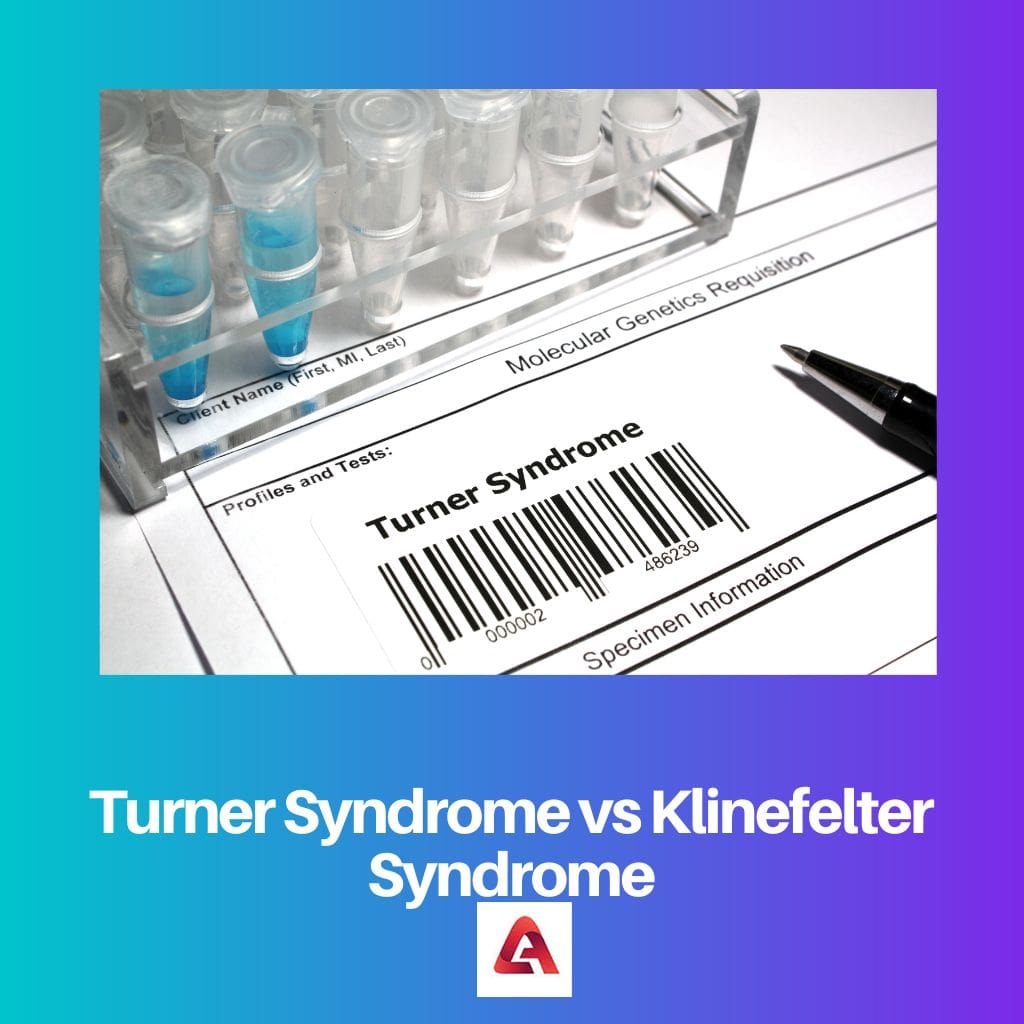Humans have 23 chromosomes. Traditionally, a person’s sex is determined by whether they have XX (female) or XY (male) chromosomes.
Atypical sex chromosome patterns, or syndromes that impair these sex chromosomes can cause various diseases.
Turner Syndrome and Klinefelter Syndrome are disorders originating from genetics. They are not contagious disorders; females and males could be born with them.
One condition is associated with a missing genetic sex chromosome, whereas the other is associated with an additional genetic sex chromosome. Each one is particular to the male or female gender.
Turner syndrome is a disorder that only affects females and is brought on by a missing or incomplete X chromosome. In contrast to the typical 2, a girl with Turner syndrome only possesses one X chromosome.
Numerous medical and developmental issues, including as short stature, ovarian failure, and heart anomalies, can be brought on by Turner syndrome.
Turner syndrome can be identified during pregnancy, infancy, or early life years.
In general, a baby girl has two X chromosomes (XX), whereas a baby boy has one X and one Y. However, a male baby born with Klinefelter syndrome has an extra X chromosome (XXY). Klinefelter syndrome may negatively impact testicular growth, resulting in testicles that are smaller than usual, which can limit testosterone output. In addition, the syndrome may result in less body and facial hair, less muscle mass, and increased breast tissue.
Klinefelter syndrome is a male-specific genetic disorder that frequently isn’t discovered until adulthood.
Key Takeaways
- Turner Syndrome occurs in females missing one or part of one X chromosome, while Klinefelter Syndrome affects males with an extra X chromosome.
- The symptoms of Turner Syndrome include short stature, infertility, and heart defects, while the symptoms of Klinefelter Syndrome include tall stature, small testicles, and reduced fertility.
- Both conditions require lifelong medical management, with treatment options including hormone therapy, fertility assistance, and psychological support.

Turner Syndrome vs Klinefelter Syndrome
Turner syndrome affects 1 in 2,500 female births and is diagnosed during childhood. Symptoms include short stature, delayed puberty, infertility, heart and kidney problems, and learning difficulties. Klinefelter syndrome affects 1 in 500 male births and is not diagnosed until adulthood.
Comparison Table
| Parameters of Comparison | Turner Syndrome | Klinefelter Syndrome |
|---|---|---|
| Occurs in | 1 in 2500 phenotypic females | 1 in 1100 phenotypic males. |
| Treatments | With Estrogen, growth hormones, and replacement therapy | Testosterone and hormone therapy. |
| Physical appearance | Females are sterileAbsence of menstruation | Males are sterileUndeveloped sex organs |
What is Turner Syndrome?
Henry Turner, who first recognized the condition in 1938, is credited with giving it its name. In this disorder, one of the sex chromosomes is missing, leaving the affected person with 45 chromosomes instead of the normal 46.
A newborn with Turner syndrome is frequently born with few traits. Puffy hands and feet are one characteristic that can be observed. Patients with Turner Syndrome lack menstruation, have a webbed neck, are petite, and lack fully developed reproductive organs. They are also sterile.
People who are born with Turner Syndrome are significantly more likely to experience health problems. These conditions include abnormal kidneys, hearing loss, and congenital cardiac problems. There can be significant individual variation in other symptoms of Turner syndrome.
Girls and women with Turner syndrome may exhibit a variety of signs and symptoms. Turner syndrome may not be immediately visible in some girls, but it may be noticeable in other girls early on, thanks to several physical characteristics.
Turner syndrome has no known treatment, but many of its symptoms can be managed. Growth hormone is one of the available treatments for Turner syndrome patients.
The treatment starts at the age of 5 or 6 and continues into adolescence. Patients receive steroid and estrogen pills to help with the process of sexual development.
What is Klinefelter Syndrome?
The syndrome is named after American endocrinologist Harry Klinefelter, who first described it in 1942. Whenever a boy is born with an extra copy of the X chromosome, the genetic disorder is known as Klinefelter syndrome.
Klinefelter syndrome is a male-specific genetic disorder that frequently isn’t discovered until adulthood.
Klinefelter syndrome may negatively impact testicular growth, resulting in testicles that are smaller than usual, which can limit testosterone output.
In addition, the syndrome may result in less body and facial hair, less muscle mass, and increased breast tissue.
Not everyone who has Klinefelter syndrome experiences the same symptoms and outcomes.
While most men with Klinefelter syndrome produce little to no sperm, some may be able to become fathers with assisted reproductive technologies. Males with Klinefelter syndrome experience a wide range of signs and symptoms.
Klinefelter syndrome has no known treatment, but some of its complications can be managed if necessary.
Possible treatments include speech therapy, intracytoplasmic sperm injection, testosterone replacement therapy, and fertility treatments like artificial insemination with donor sperm.
Main Differences Between Turner Syndrome and Klinefelter Syndrome
- Turner Syndrome does not have any relation to the mother’s age, meanwhile women at 40 years old have a four-time higher risk of having a child with Klinefelter Syndrome than women aged 24.
- Turner syndrome and Klinefelter syndrome are both extremely rare conditions, with the former occurring in 1 in 2500 phenotypic female births and the latter in 1 in 1100.
- Turner syndrome has various characteristics, including sterility in females, underdeveloped breasts, and non-existent or underdeveloped ovaries. Menstruation is not present, although there is a uterus, vagina, and vulva. They even have a webbed neck, small stature, cardiovascular issues, hearing loss, and solely have a female-specific physical look.
- Males with Klinefelter syndrome are sterile, and their reproductive organs—such as the testicles, penis, and seminal vesicles—are underdeveloped and tiny. The person is taller, slimmer, and more feminine-looking, with long limbs, larger breasts, and a feminine-sounding voice.
- While testosterone therapy is used to treat Klinefelter syndrome, estrogen, growth hormones, and replacement therapy are frequently used to treat Turner syndrome.
- Turner syndrome, which affects only females clinically and physically since it results from the loss of one of the sex chromosomes in newborns, causes the affected individual to have many challenges with their physical appearance. On the other side, a male is said to have Klinefelter syndrome if he was born with an extra X chromosome.




